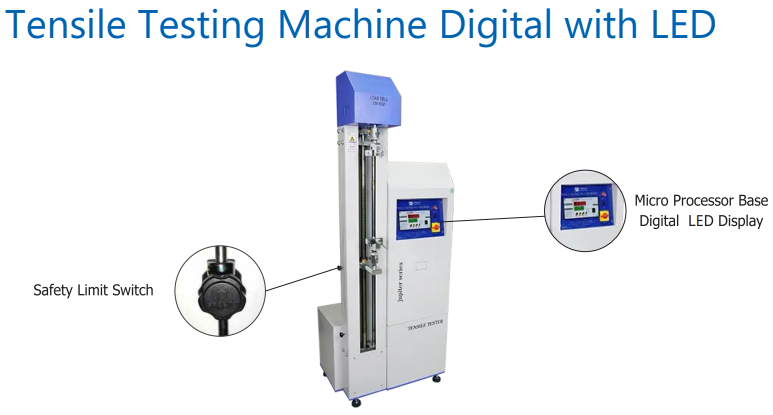

Have you ever analyzed the mechanical stability of a suspension bridge under dynamic load or evaluated the load bearing capability of a climbing rope subjected to tensile stress ? These scenarios revolve around two critical mechanical properties: tensile strength and break strength. Though frequently conflated, they denote distinct parameters. Misinterpreting them can result in material selection errors in structurally sensitive environments.
In industrial sectors such as civil engineering, packaging technology, technical textiles, and precision manufacturing, comprehension of these strength metrics is not optional; it is essential. Accurate differentiation between a material's maximum stress capacity (tensile strength) and the actual force at rupture (break strength) directly impacts product safety and performance reliability.
Imagine you are pulling a piece of chewing gum. As you stretch it, there’s a point where it starts to thin out and deform before it snaps. That moment, just before it starts to fail, is where tensile strength comes into play.
In technical terms, tensile strength is the maximum stress (force per unit area) that a material can withstand without breaking. It is measured in MPa (megapascals) or psi (pounds per square inch).

We use machines like the Tensile Strength Tester or a Universal Testing Machine (UTM). These machines grip a sample from both ends and stretch it until it fails. Here's the basic formula:
Tensile Strength = Maximum Load / Cross-Sectional Area
So, if a steel rod can handle 50,000 N and its cross-sectional area is 10 mm², its tensile strength is:
50,000 / 10 = 5,000 MPa
This tells engineers how strong the material is per unit area, no matter the size of the piece.
Break strength, on the other hand, is much simpler. It’s just the total force needed to make a material snap. No calculations involving area or shape—just raw force.
You’ll usually see break strength measured in Newtons (N) or pounds (lb).
Example:
Think about a tow rope. You want to know how much force it can take before it breaks. That’s break strength—the max force it can handle, no matter how thick or thin it is.
It’s measured using the same machines (Tensile Tester or UTM), but instead of dividing by area, we just record the maximum force at failure:
Break Load = Maximum Force at Failure
| Property | Tensile Strength | Break load |
| Definition | Stress at which material fails (force/area) | Total force to cause break |
| Units | MPa, psi | Newtons (N), pounds (lb) |
| Focus | Internal strength of material | Total load capacity |
| Formula | Max Load / Cross-Sectional Area | Max Force at Failure |
| Applications | Engineering, material comparison | Textiles, ropes, packaging |
Here’s why these properties matter—because the wrong choice can lead to disaster:
Get it wrong, and you risk safety failures. Get it right, and your product performs exactly how it should.
Here’s a quick look at the testing equipment used:
Tensile Strength Tester: machine grips and stretches a material to record force and elongation. It helps determine both tensile and break strength. Used in textiles, plastics, and metal testing labs.
Universal Testing Machine: A versatile machine that can perform tensile, compression, bending, and other tests. It’s often equipped with software that calculates tensile strength automatically.
Bursting Strength Tester: This one’s mainly for paper, cardboard, and fabrics. It helps determine how much internal pressure a material can handle before it bursts—not exactly tensile or break strength, but equally important for understanding durability.
Say you’re testing a steel rod with a cross-sectional area of 10 mm², and the tester shows a break at 50,000 N.
Boom—now you know how tough the material is and how much force it can actually take.
Q1: How does tensile strength differ from break strength?
Ans:- Tensile strength quantifies the maximum stress (force per unit area) a material can endure, whereas break strength denotes the total load causing failure, regardless of the specimen’s size.
Q2: What instruments are used for these measurements?
Ans:- Both properties are commonly measured using Universal Testing Machines and Tensile Strength Testers capable of controlled elongation and precise load monitoring.
Q3: Is break strength always greater than tensile strength?
Ans:- Break strength increases with specimen size; however, tensile strength remains constant for a given material irrespective of size.
Q4: Can two specimens have identical tensile strengths but different break strengths?
Ans:- Yes. Specimens with the same material properties but different cross-sectional areas will share tensile strength values but differ in break strength.
Q5: What variables influence test outcomes?
Ans:- Factors such as specimen geometry, environmental conditions (temperature, humidity), strain rate, and material homogeneity can significantly impact results.
With over four decades of industry leadership, Presto Group is synonymous with precision and reliability in materials testing instrumentation in India and globally. Their offerings include:
For rigorous testing of tensile and break strengths, Presto Group delivers instruments that uphold the highest standards of quality and accuracy.
Tensile strength and break strength may seem technical, but understanding them could be the difference between success and failure—literally. The right tools, like a Tensile Strength Tester or Universal Testing Machine, make it easy to get the data you need.
For exacting mechanical testing, choose Presto Group’s competitively priced tensile strength testing equipment.
Contact us:
Phone: +91 9210 903 903
Email: info@prestogroup.com
Our experts are ready to guide you with the right solution for your industry needs!
Related Blogs

"Improve paper quality testing accuracy by up to 85% with a Cobb Tester. Reliable, fast, and essential for packaging and paper manufacturing quality control."

Improve packaging strength with the right Edge Crush Test formulas and methods to ensure durability and performance.

"Improve packaging safety and durability with reliable heat sealing."